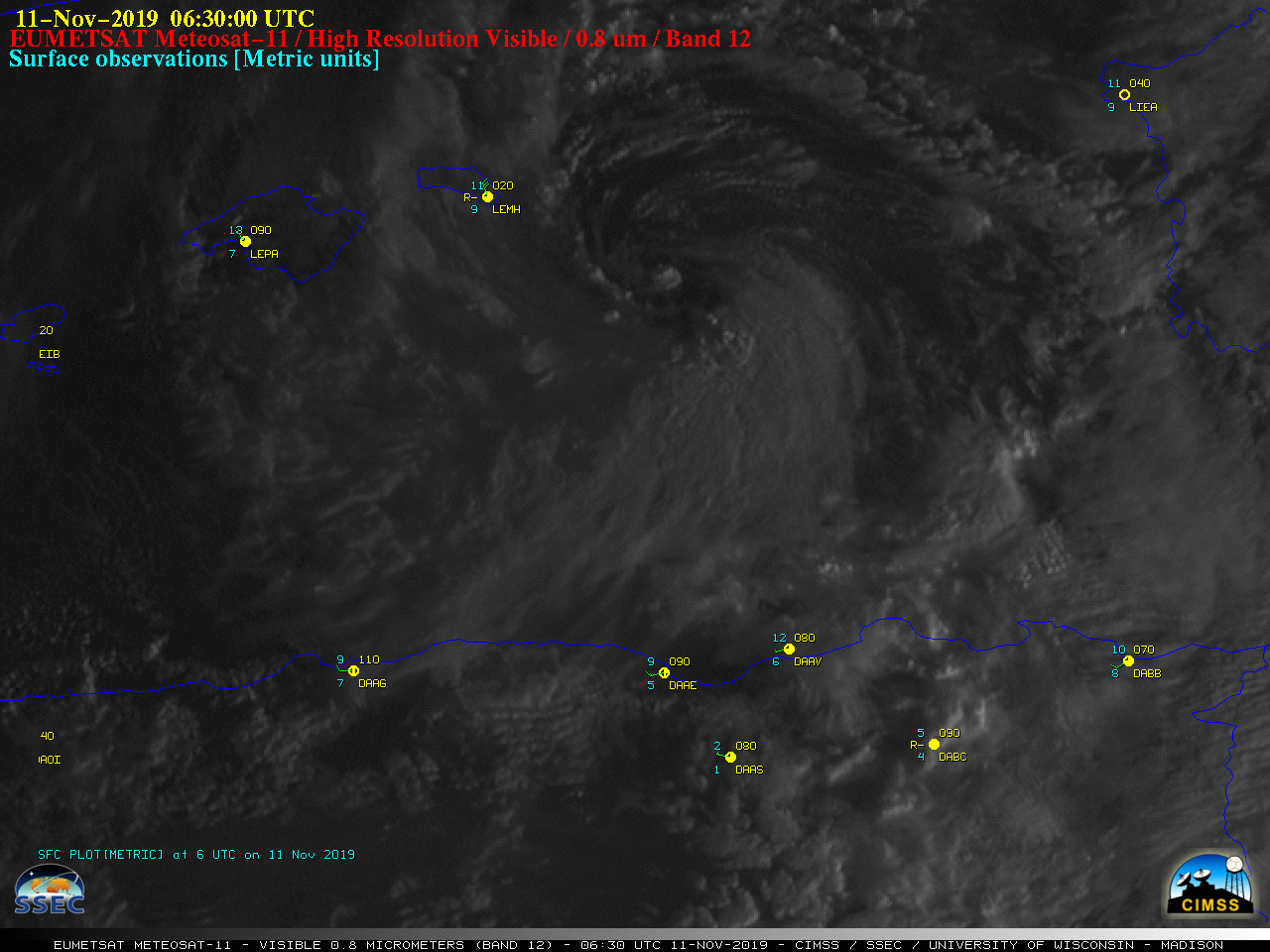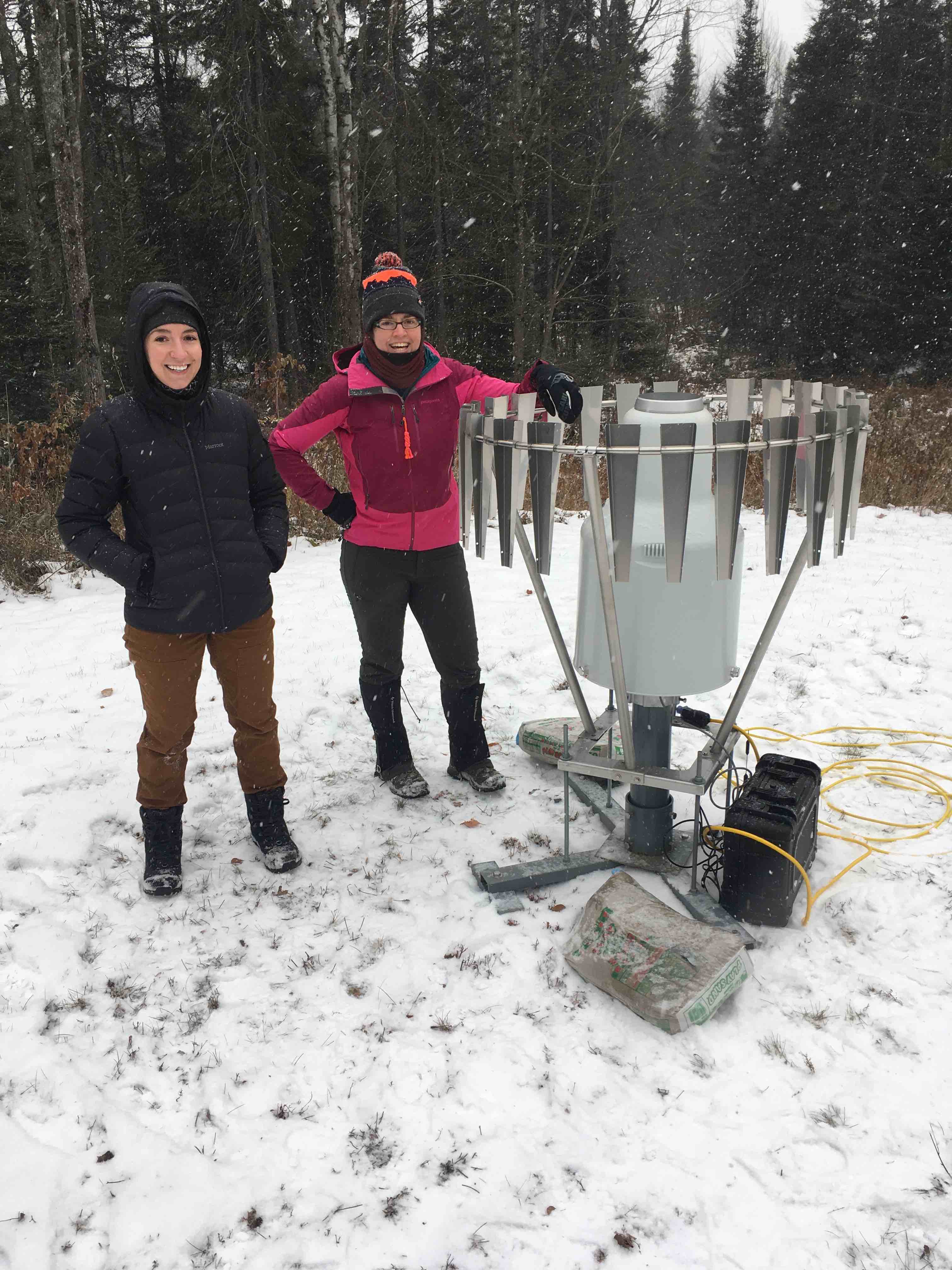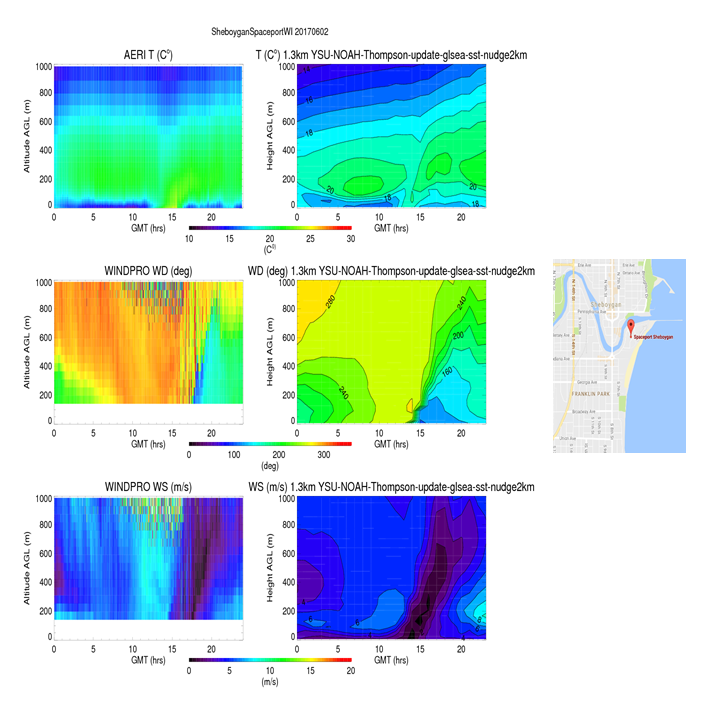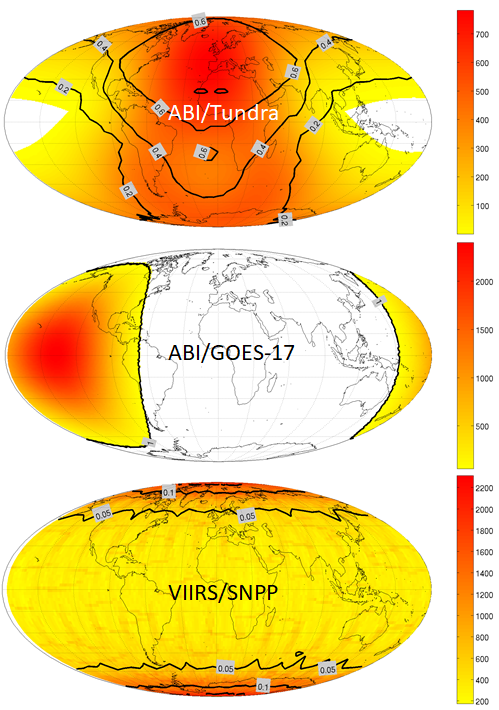
[ Archive ]

 |
CIMSS-NOAA Weekly Report [ Archive ] |
 |
ASPB AND CIMSS WEEKLY HIGHLIGHTS FOR THE WEEK ENDING NOVEMBER 15, 2019
IN THE PRESS:
SSEC and CIMSS Scientists in the News: Scientists at the University of Wisconsin-Madison (UW) Space Science and Engineering Center (SSEC) and the Cooperative Institute for Meteorological Satellite Studies (CIMSS) provide expert commentary, interviews, and imagery to news media and participate in events to promote science. In the news this week: 1) CIMSS Honorary Fellow Jordan Gerth spoke with Wisconsin Public Radio about southern Wisconsin's unusually snowy Fall: https://www.wpr.org/another-round-snow-blankets-wisconsin. 2) The NWS San Francisco Bay Area forecast published a post-analysis of the state's historic October wildfire conditions, in which they referenced the CIMSS Satellite Blog post on the Kincade Fire: https://www.weather.gov/mtr/FireWeatherOctober2019. 3) CIMSS Satellite Blog contributor Scott Bachmeier published posts on "Lake-effect, river-effect and bay-effect cloud bands producing snowfall" (Nov. 13), "Medicane Trudy" (Nov. 11), and "Bush fires in eastern Australia". Read more at the CIMSS Satellite Blog: http://cimss.ssec.wisc.edu/goes/blog/. (J. Gerth, S. Bachmeier, CIMSS, J. Phillips, SSEC, 608-262-8164)
 (Click image to enlarge)
(Click image to enlarge)
Figure: EUMETSAT Meteosat-11 visible images showing circulation and eye-like feature of Medicane “Trudy” as it moved southeastward across the Mediterranean Sea toward Algeria on 11 November 2019. Source: CIMSS Satellite Blog.
ITEMS FOR THE ADMINISTRATOR:
ITEMS FOR THE ASSISTANT ADMINISTRATOR:
ITEMS FOR THE OFFICE DIRECTOR, STAR:
Snow measurement network deployed: A snow measurement network was deployed this week near the Marquette, Michigan National Weather Service (NWS) Weather Forecast Office (WFO). This project is a collaborative effort between NOAA, NASA, and the University of Wisconsin-Madison (UW-Madison) Cooperative Institute for Meteorological Satellite Studies (CIMSS) and Space Science and Engineering Center (SSEC). The snow measurement network consists of 10 Pluvio precipitation measurement gauges that supports ongoing radar and satellite quantitative precipitation estimation research projects. Claire Pettersen (CIMSS/SSEC), Marian Mateling (UW-Madison), Mark Kulie (NOAA ASPB), and Brandon Jameson (NASA) deployed the instruments amidst the recent cold air outbreak that produced substantial lake-effect snow amounts in the Great Lakes region. (M. Kulie, E/RA2, 608-263-6583, mark.kulie@noaa.gov, C. Pettersen CIMSS/SSEC, 608-772-6270)
 (Click image to enlarge)
(Click image to enlarge)
Figure: Marian Mateling (UW-Madison) and Claire Pettersen (CIMSS/SSEC) after a successful precipitation measurement gauge deployment near Marquette, MI.
NOAA Planet Stewards in Madison: NOAA’s Cooperative Institute for Meteorological Satellite Studies (CIMSS) hosted a Planet Stewards teacher workshop on Friday November 15th in Madison Wisconsin. The morning agenda focused on climate with participants learning about Great Lakes climate resources and classroom activities led by Margaret Mooney from CIMSS followed by a session on NOAA’s Climate Explorer toolkit led by LuAnn Dahlman from NOAA’s Climate Program Office. The afternoon shifted to the GOES-R satellite series with Tim Schmit from NOAA’s Advanced Satellite Products Branch (ASPB) and Scott Lindstrom from CIMSS presenting on GOES-R and the Advanced Baseline Imager. Teachers were also invited to participate in the spring 2020 GOES-16/17 Virtual Science Fair (http://cimss.ssec.wisc.edu/education/goesr/vsf.html) coordinated by CIMSS. (M. Mooney, CIMSS, 608-213-5399, T. Schmit, E/RA2, S Lindstrom, CIMSS)
ITEMS FOR THE DIVISION CHIEF, CoRP:
Presentations in Memphis by CIMSS: Scott Lindstrom, Cooperative Institute for Meteorological Satellite Studies (CIMSS), presented satellite training to forecasters in the Memphis Forecast Office on Tuesday morning 12 November. He discussed NOAA-Unique Combined Atmospheric Processing System (NUCAPS) soundings and gridded NUCAPS products, Day-Night Band imagery, and RGB images from GOES-16. This training was performed on one of the office AWIPS stations and was recorded for those who could not attend. In the evening of 12 November, Scott gave a presentation, "How GOES-R and JPSS data are used in National Weather Service Forecast Offices", to the local combined chapters of the American Meteorological Society and National Weather Association. (S. Lindstrom, CIMSS, 608 263 4425)
Summary of LMOS key findings for EPA Coastal Ozone Working Group: Brad Pierce presented a summary of key findings from the 2017 Lake Michigan Ozone Study (LMOS) to representatives from the Environmental Protection Agency (EPA) Working Group on Coastal Ozone on Tuesday, November 12th, 2019. The presentation included a summary of recent work with the Wisconsin Department of Natural Resources (WDNR) and the Lake Michigan Air Directors Consortium (LADCO) on development of a high resolution meteorological modeling platform in support of State Implementation Plan (SIP) photochemical modeling activities required by the EPA for regions which are in violation of the National Ambient Air Quality Standards (NAAQS). Comparisons between high resolution (1.3km) Weather Research and Forecasting (WRF) temperature and wind predictions with ground based remote sensing observations from the Atmospheric Emitted Radiance Interferometer (AERI) and WindPro Lidar have been used to determine the optimal choice in WRF configuration for capturing the lake breeze circulations that contribute to enhanced ozone along the western shore of Lake Michigan. (R. B. Pierce, SSEC 608-890-1892, J. Otkin, CIMSS, 608-265-2476)
 (Click image to enlarge)
(Click image to enlarge)
Figure: Observed (left panels) and predicted (right panels)time-height cross-sections of temperature(degrees C), Wind Direction (WD, degrees), and Wind Speed (WS, m/s) on June 02, 2017 at the LMOS 2017 Spaceport Sheboygan (inset) in Sheboygan, WI. The predicted temperatures and winds are from a 1.3km WRF simulation that used YSU boundary layer parameterization, Thompson microphysics, and high resolution lake surface temperatures from the NOAA/Great Lakes Environmental Research Laboratory (GLERL)satellite-derived surface water temperature (SST)
Tundra Orbit “Brownbag” Seminar: On November 14, a NOAA/NESDIS Office of Projects, Planning and Analysis (OPPA) Technology Maturation Program (TMP) "brownbag" seminar was held. The remote presentation was given by Tim Schmit which was entitled, "A High-eccentricity Geosynchronous Polar Orbit: Tundra" and showcased how a tundra orbit could improve the coverage of polar and surrounding regions. (Z. Li, CIMSS, 608-890-1982; J. Li, CIMSS, 608-262-3755; T. Schmit, E/RA2, 608-263-0291, tim.j.schmit@noaa.gov)
 (Click image to enlarge)
(Click image to enlarge)
Figure: Each color image shows the computed data richness (number of observations for 100 km2) and the contour shows the data continuity (based on every 15 min). A single satellite for each of three orbits (tundra, geostationary equatorial orbit and low earth orbit) is displayed.
Learning activities on GOES satellite measurement at Navajo School: Learning activities about visible and infrared observations were given to students in several science classes at the Navajo Preparatory School in Shonto Arizona. (R Rabin NOAA/NSSL and CIMSS, 405-325-6336)
Gridded NUCAPS on the CIMSS Blog: Gridded NOAA-Unique Combined Atmospheric Processing System (NUCAPS) fields are now available in AWIPS, and a CIMSS Blog Post describing them was posted on 14 November 2019. The NUCAPS Profiles are reformatted so that horizontal fields underneath the NOAA-20 overpass are produced. This yields excellent satellite-produced thermodynamic data twice a day at mandatory pressure levels; over the Contiguous United States (CONUS), these fields are produced between 0500-0900 and 1700-2100 UTC, that is, in between regular synoptic times when radiosonde data are available. The blog post is available at https://cimss.ssec.wisc.edu/goes/blog/archives/35015. (S. Lindstrom, CIMSS, 608 263 4425)
VISITORS:
NEXT WEEK:
LOOKING AHEAD:
| Archived Weeklies Page | Submit a report item |